The following is something largely prepared back in mid-October, but completed only now. Perhaps it’s better that way because additional info became available ever since, and thus a better analysis is possible.
Provided my count is not entirely wrong, through October this year, the Russian Air-Space Force (VKS) has released about 1,000 of glide bombs upon Ukraine. That was about 30 glide bombs a day. The number was at least similar though November, when two sectors of the frontline – like Avdiika and ZSU’s bridgeheads on the Dnipro – were targeted by up to a dozen of glide bombs a day, each.
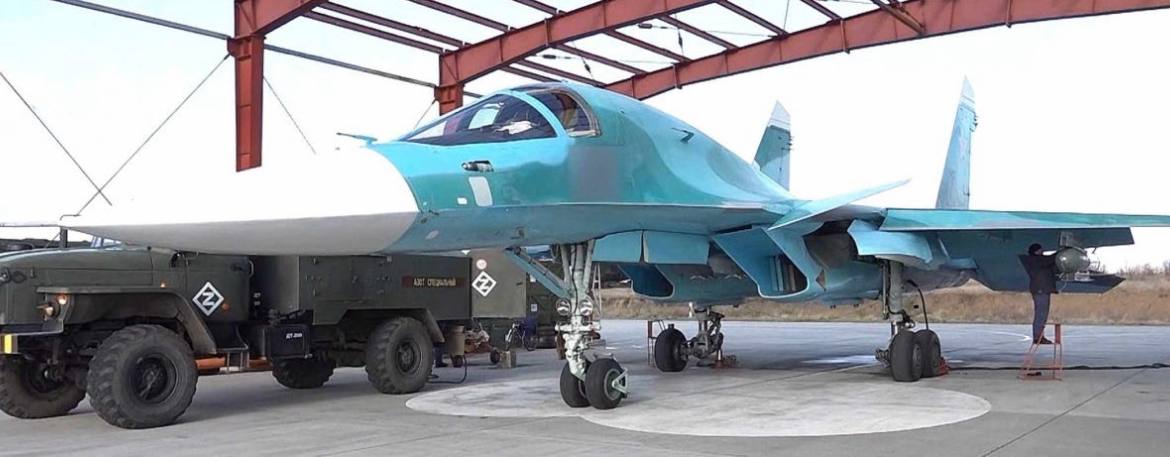
This has prompted at least some of related reporting, both in the Russian and Ukrainian social media (and we’ve mentioned them repeatedly, here on this blog). Nevertheless, my impression is that they remain a much under-reported and misunderstood factor in this war. And there appears to be a lots of confusion about how exactly is the VKS deploying them and what can the Russian glide bombs actually do. Or not. Thus, here an attempt to explain what is known so far.
***
For the start, I do not know what to think about the majority of Ukrainian sources – official or not – first calling the Russian glide bombs ‘FAB’, but meanwhile insistently terming them with ‘KAB’. I’ve got no trace of clue about Ukrainian language, but guess that both abbreviations have been based on the Russian military terminology. In the same,
- FAB stands for fugasnaya aviatsionnaya bomba (‘high-explosive aerial bomb’), while
- KAB stands for what the Russians term with korrektiruyemaya aviatsyonnaya bomba, (‘corrected aerial bomb’).
For me as a nerd (and yes: a weirdo, too), this is rather confusing because, and to the best of my knowledge,
a) weapons wearing FAB-designations are general purpose, high-explosive- or demolition weapons lacking any kind of guidance; indeed, ‘free-fall bombs’; while
b) the KAB-‘family’ of designations stands for TV-, laser-, and satellite guided bombs, but not for the kind of glide bombs deployed by the VKS in Ukraine in continuously growing since about a year.
FABs
Since 1945, the Soviets developed at least three generation of bombs: M46, M54, and M62. Based on experiences from the Second World War, the M46-series (FAB-50M-46, FAB-100M-46, FAB-250M-46 etc. up to FAB-3000M-46) was designed for deployment from subsonic aircraft, as in service of the late 1940s. The M-54-series was only slightly better in this regards, but – thanks to mass of of FAB-250M-54s, FAB-500M-54s, FAB-1500M-54s etc having their main body reinforced through addition of steel strips – it became deployable from jets that could accelerate to speeds up to around 1,000km/h.
Why is that important? Because, while installed on underwing pylons of combat aircraft, bombs are subjected to immense stress – like the heat caused by friction, vibrations caused by noise and turbulences, overpressure etc – and because one does not want bombs to start falling apart while still hanging under one’s aircraft: word is that this can get quite lethal…
Eventually, for deployment from supersonic fighter-bombers, the Soviets then designed the M62 series. See FAB-250M-62 and FAB-500M-62, to name the most widespread ones. They’ve got much thicker casings, enabling them to survive a mission while hanging on jets that might accelerate to speeds above 1,000km/h.
Still, all the FABs remained unguided. Thus, sorry, but: using the abbreviation ‘FAB’ for the Russian glide bombs of our days… ‘a little bit misleading’, to put it mildly.
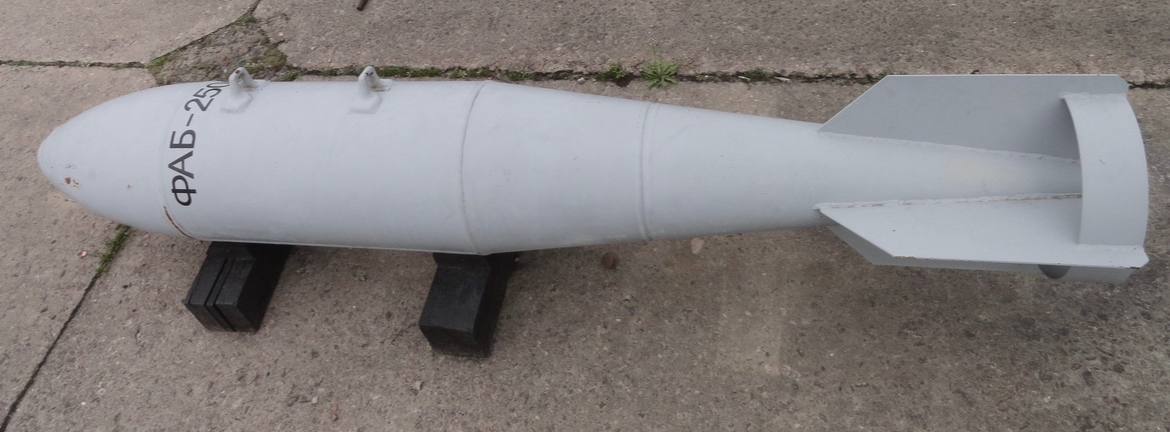
FAB-250M-62
KABs
Yes, since the 1980s, the Soviet- and then the Russian defence sector turned out dozens of different KAB-designs. See KAB-500Kr (TV-guided), or KAB-500S (GLONASS-guided), or KAB-1500L (laser-guided), just for example. However: these bombs are fundamentally different to the glide bombs deployed by the VKS of our days; they have distinct guidance sections, guiding them either with help of a laser markers, or with help of TV-cameras, or with help of GLONASS satellite navigation system. They’re quite precise, too.
However, they are also extremely expensive. The reason is that the Soviets failed to follow the Western pattern of designing free-fall bombs in modular fashion: regardless if M46, M54, or M62, all the FABs have had their fins welded to the bomb body. This resulted in a situation where one can’t ‘simply’ attach guidance sections to them. Therefore, when developing KABs, the Soviets found no other solution but to make entirely new bombs. And with the Keystone Cops in Moscow being traditionally preoccupied with cashing at every opportunity – see: corruption, and that regardless if in the times of the USSR or ever after – there was not enough money to manufacture them in significant numbers.
Still, there is no doubt that over the time a relatively large number of KABs came into being. Hundreds were deployed by the Soviet air force already over Afghanistan of the 1980s. However, during the 1990s, their production came to a near-standstill. Except for export purposes, the VKS never received more than a few dozens of each model. In certain cases (see the GLONASS-guided KAB-500S), even the Keystone Cops in Moscow went as far as to ‘publicly denounce’ the weapon as ‘much too expensive’ already before it was ‘deployed in combat’ for the first time (and then in Syria of November 2015, and, actually, for PR-purposes).
Yes, sure: since mid-2022, the Russian arms industry is working three shifts a day, but I doubt much has changed in this regards. The Russian Federation is lacking the production facilities for the necessary high technologies. Therefore, the number of KABs remains limited, and thus ‘sorry, but’: to me, the use of that abbreviation in the mainstream- and the social media is ‘a little bit misleading’, too.
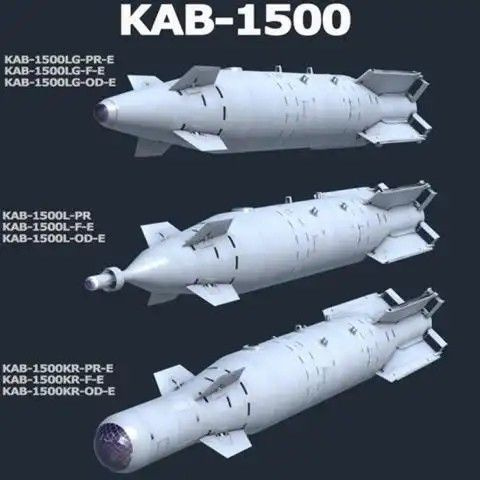
3D-renderings of the KAB-1500-family of guided bombs. They are much bigger than either FAB-250M-62s or FAB-500M-62s. The upper two families of variants are laser-homing, the lowermost is electro-optically-homing (or ‘TV-homing’). Only a few dozens of each model have ever been manufactured, and then: primarily for export
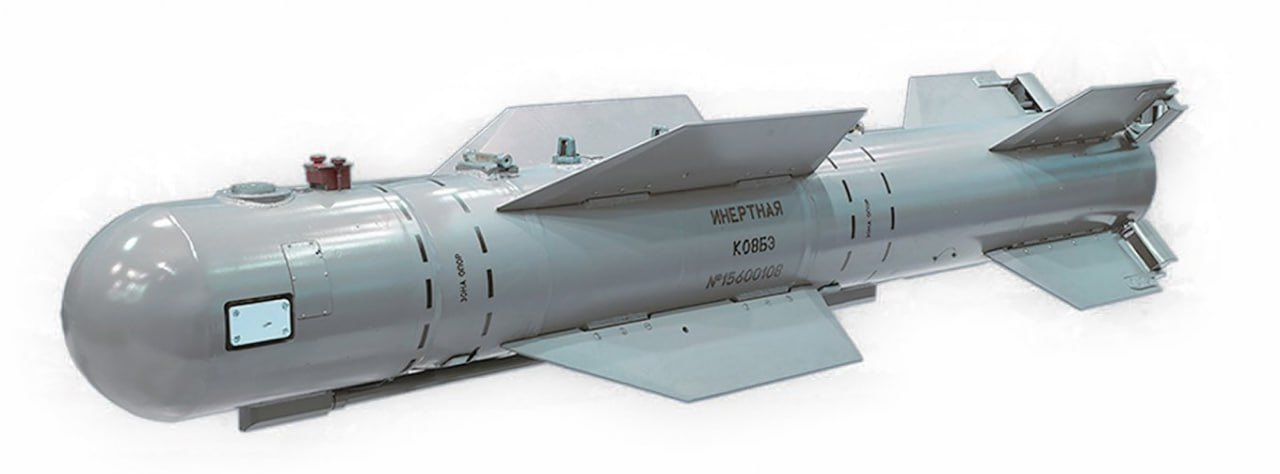
Another guided bomb reportedly deployed by the VKS in Ukraine is the UPAB-1500
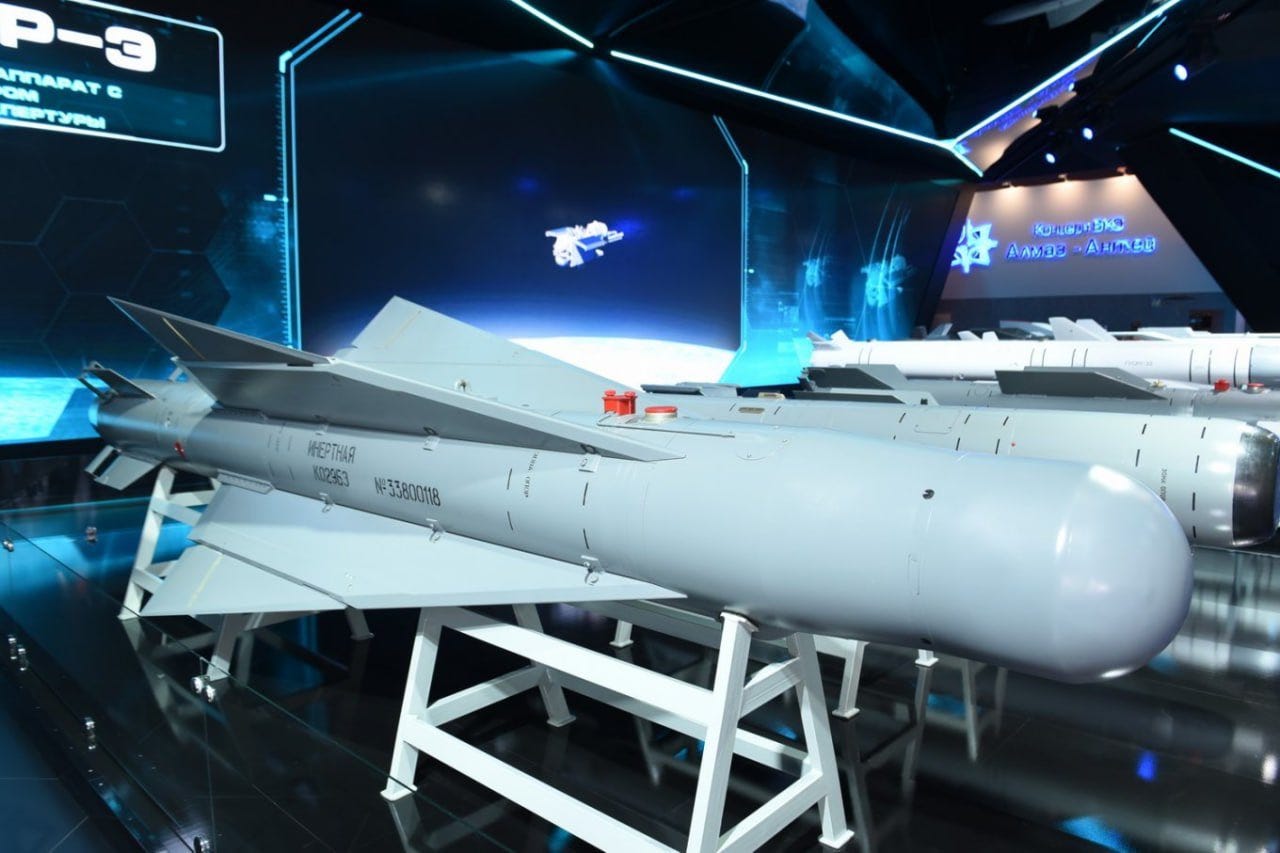
Latest version of the same weapon is UPAB-1500V. At least 2-4 examples have been shown in the Russian social media, as in the process of being loaded on Su-34, in late 2022
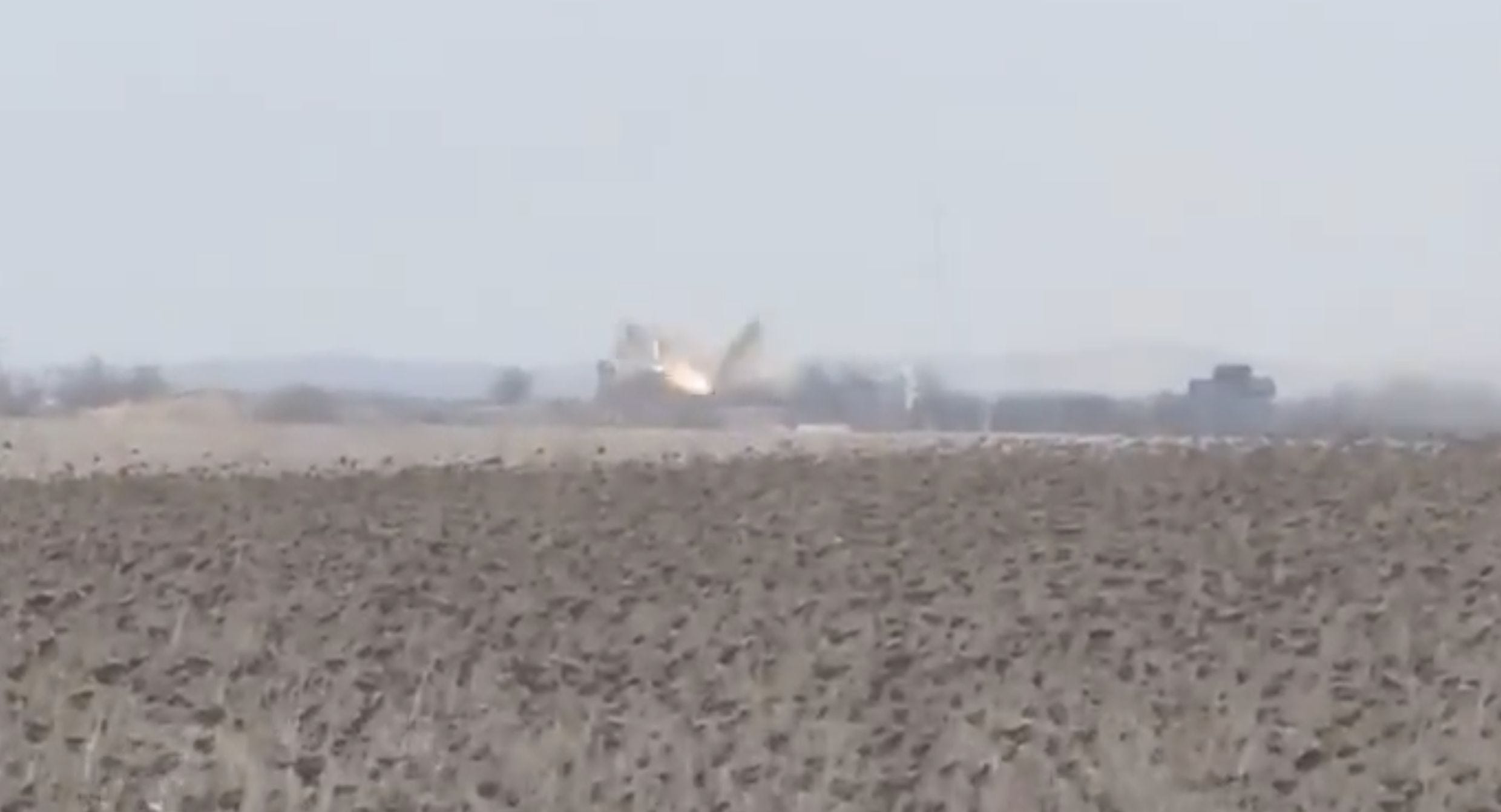
This and the still below were released by Moscow on 1 March 2023, and are - purportedly - showing a strike by UPAB-1500V on an Ukrainian position in the Avidiivka area
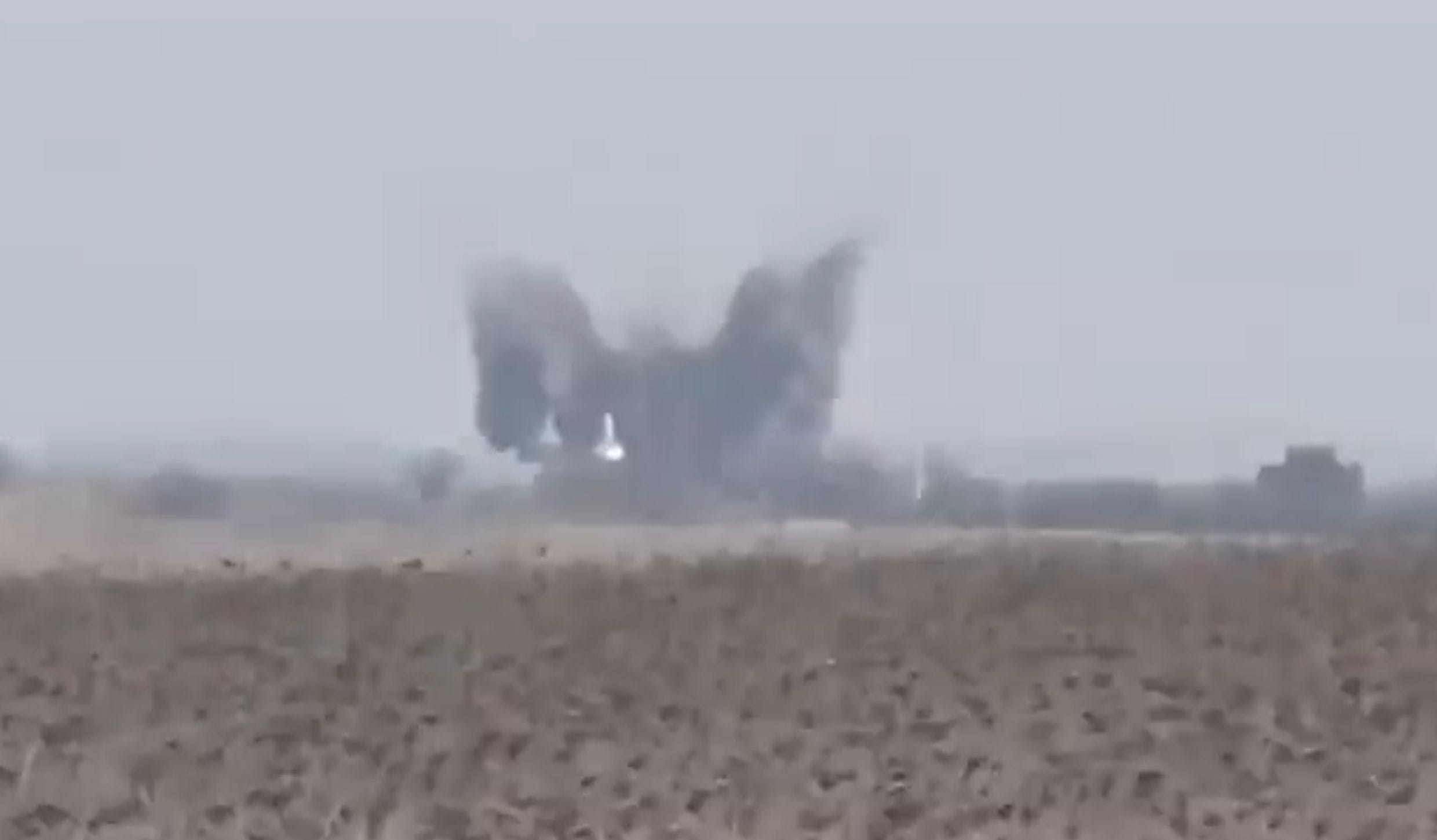
MPKs/UMPKs
Actually, the majority of Russian glide bombs deployed over Ukraine nowadays are abbreviated with MPK and/or UMPK. The latter stands for unifitsirovannogo nabora modulei planirovanie I korekcii (unified set [of] modules [for] gliding and correction).
(Here I must add that while I’m sure the abbreviation UMPK is used in operational service, I’m not entirely sure if this is the case with the abbreviation MPK: I’ve ‘caught’ it somewhere in an online Russian article describing the conversion of FAB-250M-62s into glide bombs. It could be the author simply forgot to put U in front of the MPK, or it was a typo. As usually, only time will tell…)
In comparison with KABs, MPK/UMPKs are much smaller, simpler weapons, based on FAB-250M-62 and FAB-500M-62 bombs.
Now, many are describing MPK/UMPKs as a sort of ‘Russian pendant’ to the US-deigned JDAM-family of GPS-guided bombs.
Actually, they’re none of that: at most, such comparisons are only partially truth.
Principal difference is that MPK/UMPKs are _not_ guided. By now it is certain that they are lacking guidance systems. The only major difference between, for example, FAB-250M-62, or FAB-500M-62 and the MPK/UMPK is the addition of a relatively crude ‘box’, which is flipping-out wings on release of the weapon. The result are ‘pure’ glide bombs: no ‘precision guided bombs’.
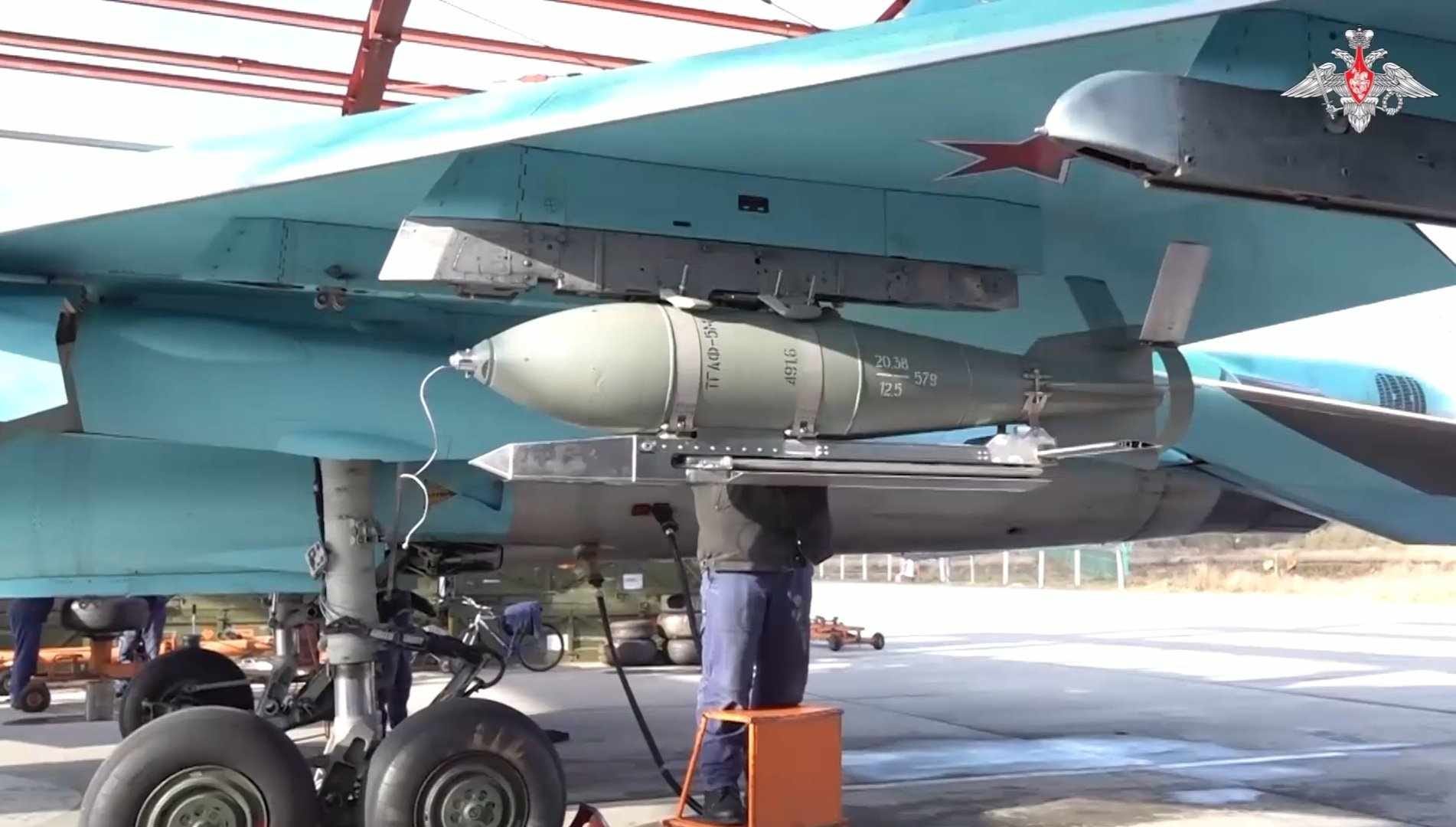
UMPK as installed on a hardpoint under the left wing of a Su-34. Notably, the ‘box’ with flip-out wings is at the bottom of the bomb-body. This is enabling the installation of the weapon on its usual bomb-lugs, atop of the bomb-body. In turn, this means that on release, at the start of its flight, the bomb is rotating 180 degrees around its longitudinal axis. Also clearly visible on this photograph are two add-on fins, screwed on the ring connecting original fins
Why this? And why then use MPK/UMPKs, nevertheless?
The US-made JDAM (and all the possible European, Turkish, and South Korean variants that are meanwhile available) not only has a GPS-receiver, but also a module bolted to the rear of the bomb-body, containing the guidance section. The latter is including a system of powered controls: its fins can steer the bomb during the flight, as necessary to correct its trajectory. Precisely this - the ability to manoeuvre as necessary - is what’s making the JDAM such a highly precise (and thus: effective) weapon – and this regardless if the weapon in question is designated:
- GBU-38: JDAM with the 250kg-heavy warhead of the Mk.82 general purpose bomb;
- GBU-32: JDAM with the 454kg-heavy warhead of the Mk.83 general purpose bomb;
- GBU-31: JDAM with the 907kg-heavy warhead of the Mk.84 general purpose bomb...
- or any of subsequent variants, like the GBU-53, with the 50kg-heavy warhead of the Small Diameter Bomb (also known as the Storm Breaker, and capable of targeting moving targets in dust and bad weather).
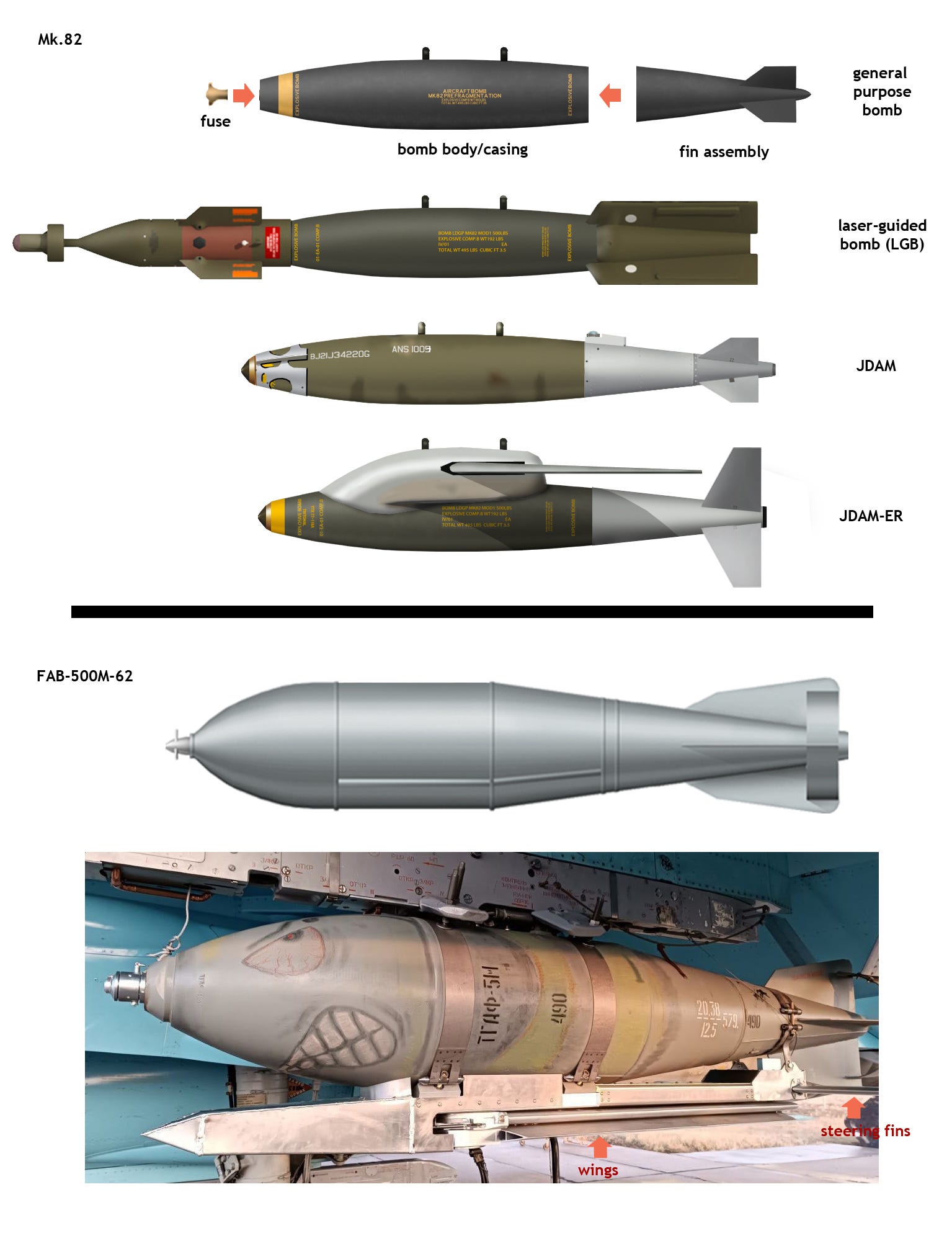
A comparison of basic designs between US/Western and the Soviet bombs. Upper half of this illustration is showing how the same bomb body - in this case that of the US-designed Mk.82 - can be equipped with different fuses and/or guidance kits (left side) and different fins, depending on operational requirements. On the contrary, Soviet/Russian-made bombs - like the FAB-500M-62 in this case - have all of their pieces welded together. They lack the modular design. This is why alone converting them into glide bombs is such a probelm: the idea of converting them into precision guided bombs has been pursued foremost outside the Russian Federation (for example, in North Korea)
However, in the System Putin, there was never a serious attempt at establishing an industry capable of manufacturing the high technologies necessary to create comparable guidance kits. Not that there was no lack of ideas, but there was no interest at political level and thus no funding for obtaining the know-how, the tools and machinery, and thus the capability of developing similar weapons. With hindsight - based on the way Pudding was waging his wars over the last 20 years - this was simply unnecessary. Until 2014, Moscow was importing the mass of such technology – like guidance systems necessary for its guided weapons – from Ukraine.
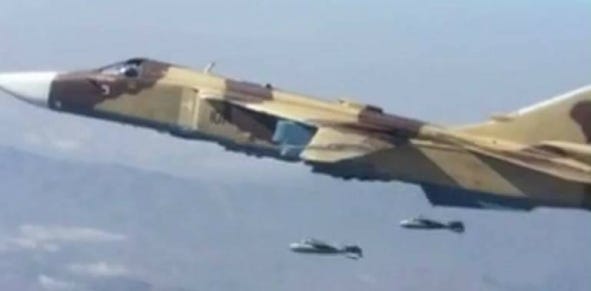
A Su-24M of the Sudanese Air Force releasing a pair of FAB-250M-62s modified through installation of - reportedly - North Korean-made guidance kits and gliding wings, as seen ‘in action’ during the War in Yemen of 2016
Now, regardless how feeble and disorganised, already Ukrainian resistance of 2014 was enough to prevent him from more than only managing a grab of the Crimea and parts of Luhansk and Donetsk: as a result, the Keystone Cops in Moscow lost the connection to about 50 major Ukrainian enterprises involved in manufacturing guided weapons for the Russian armed forces – instead of imposing themselves in control of the same. And, because there was no comparable industry in the Russian Federation, the country found itself lacking the capability to manufacture guidance sections for weapons comparable to JDAMs.
It was only once the attempt at a quick take-over in Ukraine in February 2022 failed, once it became obvious this war is not going to be over in a matter of weeks, and when Ukrainians have turned on their air defences that the VKS found itself, suddenly, on the brink of becoming entirely useless: only its Su-25s and attack helicopters remained capable of operating over the battlefield. Even then, they could do so only by operating at critically low altitudes (10-20 metres).
In comparison, regardless how much advertised as ‘equipped with PGMs’ over the last 30 years, all the heavier types of Russian fighter-bombers - see: Su-30, Su-34, Su-35 etc. – had next to none of these, because the VKS’s stocks of such weaponry were always minimal, and now the production was next-to-impossible. Especially the number of KABs available was much too small for intensive combat operations lasting months and then years. The number of stand-off guided missiles – like Kh-29 and Kh-58, for example – was slightly higher, but still insufficient for their deployment in large numbers against usual targets along the frontline: the VKS was in need of ‘thousands’ of guided bombs.
The Keystone Cops in Moscow were in urgent need of a different solution – and they came up with what I would describe as a ‘typical Russian solution’. Nope, not because I’m ‘pathologically hating Russia’, as few of online-psychoanalys can’t stop guessing, but because of few cold facts.
That ‘typical Russian solution’ was a mix of available technology, adapted to overcome enemy defences with help of rather ‘rudimentary’ solutions.
The primary aim of deploying the MPK/UMPK glide bombs was no ‘precision’, but an increase in effective range so to enable launching aircraft to release such weapons from outside the area covered by enemy air defences. Secondary was that of the new weapon requiring no modifications on systems of the aircraft deploying it (i.e. the compatibility with all combat aircraft currently in service), etc.
The result was a crude weapon, comprising a set of wings attached to existing FAB-250M-62s and FAB-500M-62s so to enable them to glide over extended range. Such a weapon can be deployed by Su-30s, Su-34s, and Su-35s from ranges outside the reach of Ukrainian air defences.
The result appear to have been two very similar kits:
- MPK: used to convert FAB-250M-62s into glide bombs, and
- UMPK: used to convert FAB-500M-62s into glide bombs.
What is much more important is the fact that neither the MPK nor UMPK has a guidance system (at least not for most of this year; more about this in the Part 2). The resulting weapons can’t alter their course once they have been released. Thus, crucial for their deployment is the precise navigation of the launching aircraft. In this regards, the Russians de-facto reached back upon their SVP-24 and similar, GLONASS-supported navigation/attack systems, which are meanwhile installed in the mass of their fighter-bombers. Why that? It’s a simple solution and, while granting nothing like the precision widely advertised by the Keystone Cops in Moscow and all the Pudding-fans abroad, it’s better than anything they’ve had before.
These attached wings of the MPK/UMPK-kits have provided a large number of ‘advanced’ weapons for the VKS’s fleet of Sukhoi fighter-bombers, while enabled the latter to deploy them from ranges of more than 60km - and thus, usually, outside the range of Ukrainian air defences. Precisely that – the methods of deployment of MPK/UMPKs, and the tactics in question - is going to be discussed in the Part 2 of this feature.
His text is published with the author's consent. First published here.
Tom Cooper